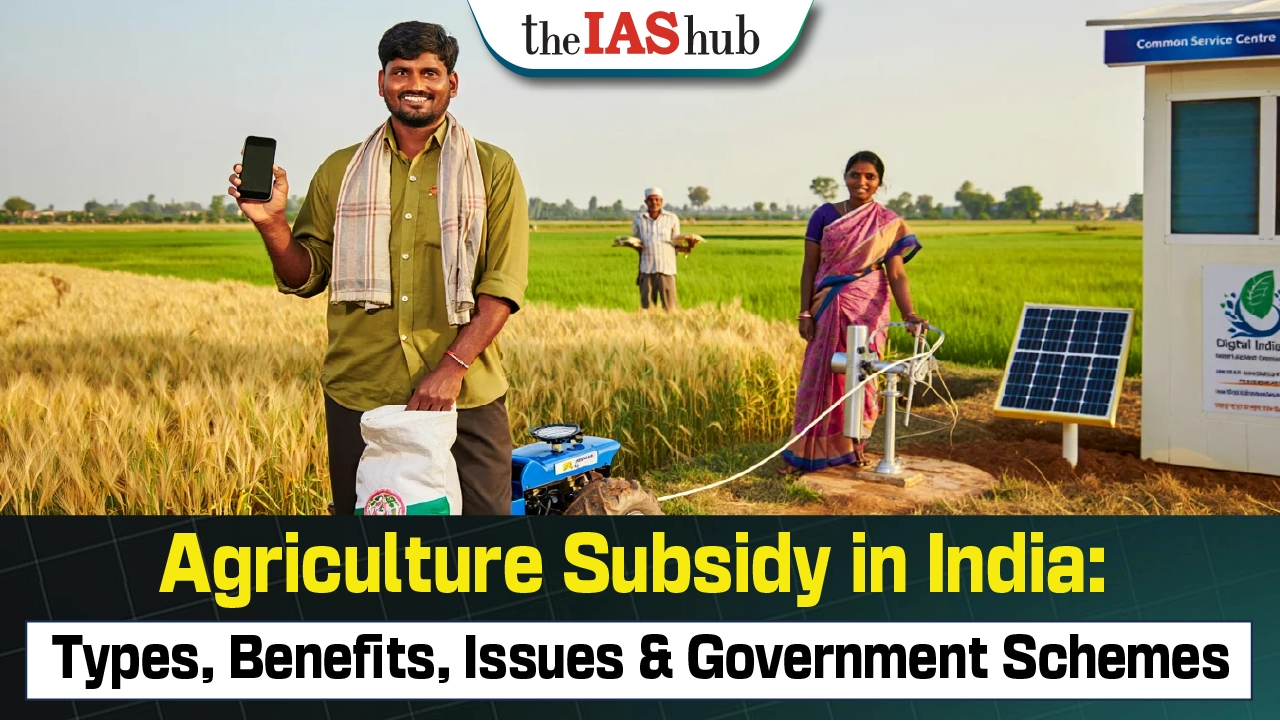Agriculture Subsidy in India supports farmers through direct and indirect aid to boost income and ensure food security. Learn about its types, benefits, challenges, and key schemes like PM-KISAN, DBT, and fertilizer subsidies driving sustainable growth.


Agriculture subsidy in India plays a pivotal role in supporting farmers by reducing their input costs and enhancing their income. These subsidies, both direct and indirect, aim to ensure food security, promote sustainable agriculture, and address regional disparities. However, their implementation also brings several challenges that require strategic policy reforms.
Issues related to Direct and Indirect Farm Subsidies
An agricultural or farm subsidy is a financial aid provided by the government to the farmers, agribusiness owners, and agricultural raw material suppliers.
A survey shows that around 21% income of the farmers per hectare is facilitated by the government subsidy.
The total subsidy offered to the Indian farmers accounts for 2% of the total GDP of India.
|
Direct subsidies
|
Indirect subsidies
|
|
Direct subsidies
|
Indirect subsidies
|

The difference between the cost of production and actual amount of fertilizer is the amount of subsidy borne by the government.
Fertilizers are critical inputs to increase output of agriculture, designing of fertilizer subsidy should be framed while keeping in mind about health of soil and environmental impacts.
Direct Benefit Transfer (DBT) was introduced on 1 January 2013 with the main aim of improving the Government's delivery system and redesigning the current procedure in welfare schemes by making the flow of funds and information faster, secure, and reduce the number of frauds.


Refine your answer writing skills and elevate your UPSC preparation with personalized support and expert feedback.
Fill out the form to get started with the program or any other enquiries !








Are you dreaming of becoming an IAS officer? Then, IAShub can be your best guide. It is one of the Best IAS Coaching in Delhi. Many students who want to clear the UPSC exam join IAShub for learning. The institute gives both online and offline classes. Their teachers are experienced and helpful. They easily explain every topic. Students also get notes, tests, and tips to do well in the exam.
IAShub is in Delhi and is trusted by many UPSC students. It offers coaching for every part of the UPSC exam – Prelims, Mains, and Interview. The classes are simple and easy to understand. The teachers are experts and guide students in the right way. IAShub is also known for its helpful notes, test series, and answer-writing practice. IAShub is the best coaching in Delhi and also gives UPSC Online Classes. This helps students from any place in India to learn. The online classes are live and also recorded. So, students can watch them anytime. These classes cover the full UPSC syllabus.
Here are some important services provided by IAShub:
The UPSC Civil Services Exam has three parts:
This exam is tough, but with the right guidance, it becomes easy to manage. Students must study smart and stay regular.
IAShub supports students from the beginning to the end. It gives the right books, tests, and notes. The classes are easy to follow, and the teachers are always ready to help. Students get personal doubt sessions too. The test series and answer checking help students learn where they need to do better. Also, free study materials save time and money.
IAShub also guides students during the final stage – the interview. Experts take mock interviews and give useful tips. This full support makes IAShub one of the best IAS coaching in Delhi.